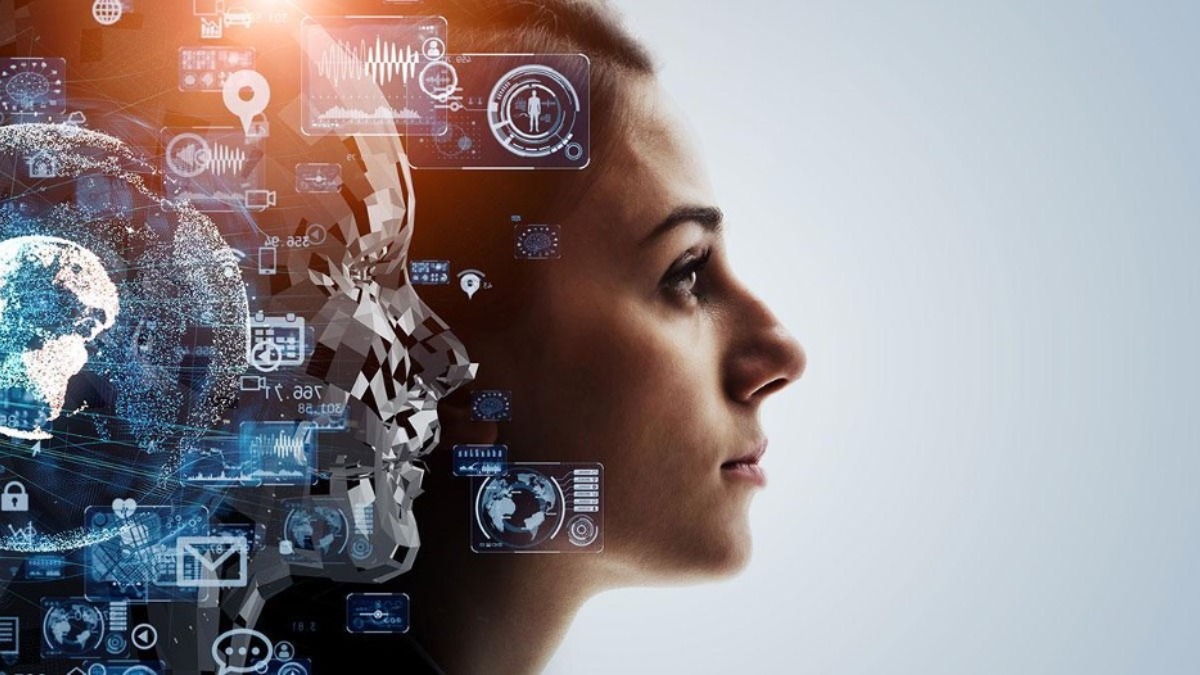Control Bionics on track to harness the power of AI for good

Control Bionics just released its new, non-invasive surface electromyography (EMG) device that can gather data to train AI models in Geneva. . Pic via Getty Images.
Special Report: Control Bionics is at the cutting edge of the positive side of AI development, launching its new NeuroStrip, an innovative physiological measurement tool at the AI for Good Global Summit on 31 May.
The ASX-listed Control Bionics (ASX:CBL) started life as a voyager across the shattered neural pathways of people whose capacity for simple, daily communication has been compromised.
CBL has spent decades designing and developing devices that allow people living with Spinal Muscular Atrophy, Cerebral Palsy, Spinal Cord Injuries and most especially the sufferers of Motor Neurone Disease, (also known as ALS or Lou Gehrig’s disease) the technoslogy to communicate.
The ability to communicate is a fundamental part of being human, and life can be incredibly difficult when disease or circumstance robs someone of that ability – but the path back to independence and community is becoming easier to navigate.
Today, the innovative Aussie medtech is accelerating into that journey by skirting the cutting edge of AI, with company CEO Jeremy Steele revealing its new NeuroStrip with wide ranging applications beyond the company’s core assistive technology at the AI for Good Global Summit 2024.
Up against some big names
Control Bionics has flown largely under the radar, somewhat eclipsed by the presence of some of the biggest names in tech and their own efforts to do similar work in the assistive technology space.
The most high profile of them all being, of course, Elon Musk – whose artificial intelligence company xAI closed a US$6bn investment round recently, and which has already made its own large language model (LLM), – the basic infrastructure for generative AI which can spit out human-ish words, images and videos.
Musk’s assistive technology effort – known as Neuralink – has been generating headlines for the past few years.
However, while the recent announcement of a successful implantation of Neuralink tech inside one user’s brain is undeniably huge news, not all of the headlines have been quite as glowing.
The invasive nature of Neuralink’s tech, which involves wiring an interface chip directly to the user’s brain, carries with it an inherently large quantity of risk, and while the short-term effects might be looking positive, the long-term effects of having an implanted device are not yet known.
What Elon Musk hopes to achieve with his company Neuralink may be taking a somewhat controversial approach, but it is shining a much needed light on the kind of assistive technology that Control Bionics specialises in.
A safer, better future
While the investing world is pumping fortunes into the development of the seemingly endless opportunities opened by emergent AI, there’s still a handful of companies utilising the tools to deliver positive outcomes.
In CBL’s case, that’s working towards tech for people who – in the not distant past – would have been condemned to endure a quality of life few today could imagine.
That is what led the company to develop its flagship technology, which it calls the NeuroNode.
The guts of the NeuroNode is a blend of AI learning and EMG, which is used to detect and amplify even the faintest of muscle signals, turning them into commands that allow users to control computers, smartphones, and other assistive technology with ease.
As you could probably imagine, having access and easy control of a device such as these is a game changer – even more so considering that the device is worn, rather than implanted.
This is a huge, and crucial, difference. Control Bionics’ tech is non-invasive, which makes it a vastly more attractive – and arguably much safer – proposition over the brain-inserted Neuralink tech.
Better, smaller and easier to use
The recently-announced Control Bionics NeuroStrip is the latest iteration of the company’s core tech, and is essentially a much more compact version of the NeuroNode, which features all of the inherent benefits of the company’s non-invasive approach.
The new tech builds on the success of the NeuroNode, which was developed specifically to enhance communication and independence for people whose physical limitations would otherwise leave them silent, or dependent on others for even the most basic of day-to-day tasks.
The NeuroStrip has been developed from the NeuroNode technology, with a fundamentally different but no less impressive goal – to use Control Bionics’ proven surface EMG to gather data, which can be used to train AI models for better outcomes in new sectors beyond the company’s existing disability assistive tech market.
Each NeuroStrip weighs less than 3 grams, can be placed pretty much anywhere on the user’s body and the application of each one is as simple as slapping on a band-aid – all while still being so sensitive that it’s able to detect signals before there is even movement associated with the muscle contraction.
The smaller size (compared to the NeuroNode) brings “unprecedented flexibility and accuracy to EMG devices unlike other devices that are restricted to a wrist or connected to external electrodes”, Control Bionics says.
“The direct to skin full spectrum and unrivalled fidelity output of NeuroStrip means it can provide the data to train AI models and has universal application across a wide variety of fields including rehabilitation, sports science, medical, and applications yet to be discovered.”
Fields of endeavour
The fields that Control Bionics is already eyeing for the NeuroStrip include medical applications, particularly in diagnostics and rehabilitation, and the already-massive and still-growing field of sports science, where any competitive edge is worth big money at the peak of most professional sports.
And that has most likely only just scratched the surface for NeuroStrip’s future applications, as even the most cursory contemplation conjures up potential uses for the military, and even space exploration.
It could also serve very useful in a number of existing industries, where fine motor control and fast reflexes are required for precision operation of machinery.
This article was developed in collaboration with Control Bionics, a Stockhead advertiser at the time of publishing.
This article does not constitute financial product advice. You should consider obtaining independent advice before making any financial decisions.
Related Topics
UNLOCK INSIGHTS
Discover the untold stories of emerging ASX stocks.
Daily news and expert analysis, it's free to subscribe.
By proceeding, you confirm you understand that we handle personal information in accordance with our Privacy Policy.








